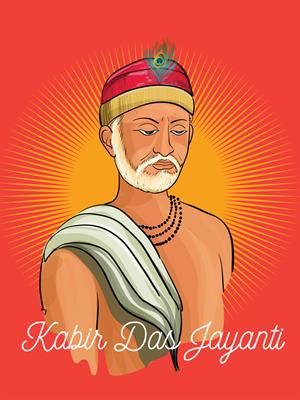PDF chapter test TRY NOW
The Advent of Sufism in India:
The arrival of Islamic rulers to India brought their cultural values and traditions, which stayed and spread across the country. The invading Islam rulers also bought their religious tenets, which were later imposed on Indian people.

Sufi Saints
The initial phase of Islam in India marked the following of stringent Shariat laws, which were propounded by their religion.
Tarikat: This is the method of liberal interpretation of the Quran, followed by the medieval Sufi’s.
The Emergence of Sufi saints, who believed in equality and one god, rose to prominence in the 10^t^h century, earning them many followers from different religions.
Sufis: The word “Sufi” is derived from an Arabic word “Suf” meaning the “Wool”, which was seen as a plausible reference to the woollen garment worn by a Sufi.
The people of the Sufi order firmly believed in paths of love and devotion, as they asserted that it was the only way to attain salvation. The sect was also inspired by Mahayana Buddhism and Hinduism.
The Emergence of various Orders:
The followers of the Sufi sects began to diverge on the principles of their sects, which led to the rise of new orders among the Sufi saints. Medieval India saw the rising of new sects among the Sufis, which had diverse patronages.

1. Chisti Order:
This order of Sufism was established by “Khawaja Moinuddin Chisti”, who was born in Afghanistan and lived and propagated this order in India. He chose Ajmer, Rajasthan, as his permanent seat in 1236.
The order was named after him and is considered to be the most famous among the Sufi orders, which still has its followers in India.
Nizamuddin Auliya: He was one of the most famous Sufi saints of the Chisti order. Amir Khusrau (royal poet of Delhi Sultanate) and Nasiruddin Delhavi are his ardent followers.
Moinuddin Chisti also popularised a form of musical recitations named the “Sama”.
2. Suhrawardi:
This Sufi order was established by “Abdul-Wahid Abu Najib”, an Iranian Sufi who belonged to the Shia sect, which was later made famous by “Sheikh Shihabuddin Suhrawardi from whose name the sect was known. He accepted royal service to the King during his period.
3. Firdausi:
The Firdausi order was founded by “Sheikh Badruddin Samarkand”, a branch of the Suhrawardi order. The order reached its height under Sheikh Sharfuddin Yahya, which was highly confined to the areas of Bihar.
Saint Kabir:
Kabir belonging to the 15^t^h century, was born in a poor Muslim family who were weavers by occupation. He was a curious child and was highly inspired by Hindu Bhakti Saint “Ramananda” teachings.

Kabir
Later, he wrote poems that developed and spoke about communal harmony between the Hindu and the Muslims. His two-line couplets are famously known as “Kabir Ko Dohe”.
Guru Arjun Dev: The fifth Sikh Guru, Guru Arjun Dev, was highly instrumental in collecting the songs of Kabir and compiling them.
Kabir’s writings substantially influenced the people of the lower strata among both religions. His followers are known by the name “Kabirpanthis”.
His ultimate aim was to unite the Hindu and Muslim religions and help them shred the age-old superstitions and attain salvation through pure devotion.
Kabir’s writings are found in Bhojpuri and Urdu languages, and some of his notable works are “Anurag Sagar, Kabir Granthawali, Sakhi Granth and Bijak”.
